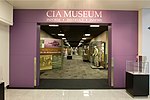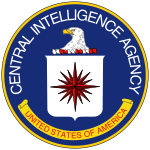Claude Moore Colonial Farm
Claude Moore Colonial Farm, originally Turkey Run Farm, was a U.S. park in Virginia re-creating and re-enacting life on a tenant farm circa 1771. The park closed permanently on December 21, 2018. The National Park Service was subsequently said to be in the process of planning the future of the park and its facilities The Friends of Claude Moore Colonial Farm at Turkey Run Inc., a privately funded foundation, paid for all activities on the Farm, while the land it occupied was owned by the National Park Service. It received only certain maintenance services from the Park Service. The Farm was located in McLean, Virginia, a suburb of Washington, D.C., next to the George Bush Center for Intelligence and the Turner-Fairbank Highway Research Center. The mission of Claude Moore Colonial Farm was to recreate the life of tenant farmers circa 1771. The majority of Virginians of that time period were tenant farmers who grew tobacco to pay their rent while growing food to eat. By contrast, Colonial Williamsburg mainly demonstrates the life of merchants, landowners, and other members of colonial Virginia's upper crust.
Excerpt from the Wikipedia article Claude Moore Colonial Farm (License: CC BY-SA 3.0, Authors).Claude Moore Colonial Farm
Colonial Farm Road,
Geographical coordinates (GPS) Address Nearby Places Show on map
Geographical coordinates (GPS)
| Latitude | Longitude |
|---|---|
| N 38.953611111111 ° | E -77.1525 ° |
Address
CIA Headquarters Heliport
Colonial Farm Road
20812
Virginia, United States
Open on Google Maps








